Unlock the power of the alphabet to create a winning plan for your PR program. Corporate reputation management strategies, more commonly referred to as public relations (PR) campaigns, are the basis for successful campaigns. Especially in 2023, when customers expect more than ever and news travels faster than you can click “Post,” successful PR tactics need to be embraced by businesses to make the most of their brand reputation, customer interactions, marketing budget, crisis communication strategies, revenue growth and more.

Keep reading as we explore how each letter of the alphabet represents an important PR concept, which can serve as a valuable framework for crafting effective PR programs that leave a lasting impact.
A – Audience Analysis
Your audience is everything! Brands need to know about the target customer before any other corporate reputation management planning can begin. Target demographics, interests, preferences, pain points, media consumption, and more give insight into where the audience can be found and what message is likely to connect and convert. Some brands might choose to create personas, or sample customers, to help visualize and conceptualize key audiences.
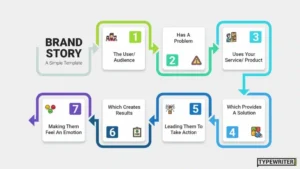
B – Brand Storytelling
A brand’s story is an incredibly powerful thing. Crafting a compelling brand narrative must not only humanize the company but must also speak to something deeper within
the target audience. The brand’s story should be authentic, relatable and inspire action from the audience. Here’s a quick flow on how a brand’s story can be created to best reflect positive corporate reputation management, connecting the brand to an emotion felt by the audience for your PR program.
C – Crisis Management
Crisis communication strategies are something that every brand hopes they’ll never have to use, but are relieved to have a plan in the event that a crisis does occur. You don’t want your team trying to scrape together messaging for both internal teams and customers in the midst of a crisis. Having crisis communication strategies already in place that include important leadership contact information, identify a spokesperson, have pre-provided messaging templates and outline investigation and monitoring steps will ensure that your corporate reputation management during a crisis goes smoothly.
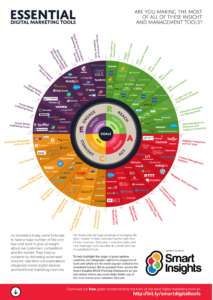
D – Digital Presence
We can’t begin to discuss modern PR programs without considering digital PR strategies. Digital PR includes online corporate reputation management tactics including pay-per-click (PPC) ad placements, social media marketing, website/landing pages, video production, sentiment monitoring and analysis, direct engagement with customers such as responding to reviews and more. A strong online presence and proper use of communication channels can significantly impact a brand’s reputation and revenue.
E – Engagement
People want to know that they are being heard and understood. Engaging with both internal stakeholders and the target audience is a good way to build a positive relationship. Engagement can include online posts, internal and external eNewsletters, videos, and numerous other digital and traditional marketing strategies. The goal is to foster two-way communication so that the brand can share its brand story and the customer, employee or leadership can communicate in return.
F – Fact-Checking
It’s always a good idea to verify the accuracy of the information being provided via your owned channels or to the media. It’s important to avoid spreading false or misleading information that can damage your organization’s reputation, especially when engaging in crisis communication strategies. When trust is low, providing accurate facts that can be easily verified is a key corporate reputation management tactic.
G – Goals and Objectives

How do you know which corporate reputation management strategies to employ without clear goals and objectives? Setting goals and knowing what you need to accomplish is vital, as these goals will inform everything from channel placements to messaging and everything in between. By defining measurable targets and key performance indicators, your brand can also engage in PR measurement and evaluation, allowing for adjustments to boost better performance. Ideally, you’ll want to set SMART goals, which can provide a structure for results-driven campaign creation.
H – Honesty and Transparency
Brands should strive to maintain honesty and transparency in all media interactions, especially when engaging in crisis communication strategies to address challenging or negative situations. Public relations best practices for corporate reputation management include admitting mistakes and providing solutions when necessary, both for internal and external communications.

I – Image Building
In the words of Warren Buffett, “It takes 20 years to build a reputation and five minutes to ruin it. If you think about that, you’ll do things differently.” It is central to the success of your business to cultivate and maintain a positive brand image. Corporate reputation management strategies to shape the public perception can include corporate social responsibility (CSR) programs, providing valuable content via owned channels, sticking to your brand values and putting the customer first.
J – Journalistic Approach
It can be beneficial to adopt a journalistic approach to PR, especially for press release optimization or crisis communication strategies. When it comes to corporate reputation management, you want to deliver accurate and newsworthy content. This means that you will want to put out press releases for only newsworthy updates, and always include truthful, authentic and transparent information.
K – Key Messages
Communicating clearly is a pillar of corporate reputation management. That’s why it is critical to craft and deliver concise and impactful key messages throughout your PR programs. The Public Relations Society of America (PRSA) notes that key messages should be:
- Concise
- Strategic
- Relevant
- Compelling
- Simple
- Memorable
- Real
- Tailored
L – Leadership Positioning

Establishing executives and brand representatives as industry leaders is a great way to engage in corporate reputation management. Having thought leaders be the voice of your brand humanizes the business as well as shows customers and stakeholders that the brand is on the cutting edge of advancements within the vertical. Leadership positioning such as this can generate website traffic, boost lead generation, increase media mentions, drive email subscriptions, forge customer relationships and provide content for backlinks.
M – Measurement and Analytics
PR measurement and evaluation through analytics are essential to making the right campaign adjustments. There is a strong need for tracking and analyzing data to evaluate the effectiveness of PR efforts. Most digital media channels provide a wide range of reviewable data, and those insights can guide PR teams to adjust placement, messaging, spend, target audience and more when evaluating a corporate reputation management plan.
N – Networking
There is a huge benefit to building connections with industry professionals, influencers, stakeholders and media. The significance of networking and maintaining positive relationships in the realm of corporate reputation management cannot be understated. Through networking, brands can gain noteworthy opportunities and valuable media exposure.
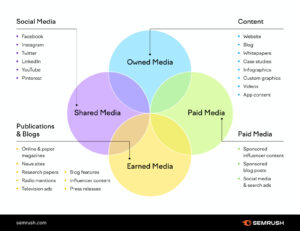
O – Online Reputation Management
Of course we can’t talk about corporate reputation management in the digital age without mentioning online reputation management. This tactic plays a significant role by monitoring and addressing online feedback and reviews. This can be a feel-good appreciation post to a customer that left a positive review, or addressing concerns from, an angry customer. This can also shed light on reoccurring problems that the company might be able to address at the source to prevent future negative sentiment. Brands will want to monitor owned, shared, earned and paid media channels.
P – Partnerships and Collaborations
Partnerships and collaborations are a fun and effective way to enhance your corporate reputation management plan. Teaming up with complementary brands and organizations for mutual promotion can yield great return on investment (ROI). Not only is this a newsworthy event that provides content for a variety of channels, but then your brand is exposed to the other company’s target audience in conjunction with products and services they already use and trust.
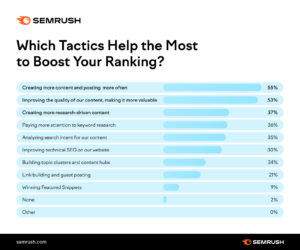
Q – Quality Content
Quality content is a must-have in any corporate reputation management strategy, and the benefits of creating valuable, informative and engaging content are many. Customers look for and engage with value-driven content. Not only that, quality content speaks to your brand’s purpose, supports SEO and can boost ranking, provides important answers to customers, boosts engagement and helps build trust in the brand.
R – Relationship Building
Fostering strong relationships with stakeholders, customers and partners is an important piece of any corporate reputation management plan. Strategies to take your brand’s relationship building to the next level include understanding what speaks to your target audience, creating value, providing personalized communication and speaking from a place of authenticity and honesty. This is critical during crisis communication strategies, as the relationship at that time can be tumultuous, so strong relationship building, based in honesty and transparency, is vital.
S – Social Media Strategy
In today’s media landscape, a social media plan is often the base from which other communication initiatives are born. However, social media is constantly changing and there are always new and exciting opportunities to investigate (Threads, anyone?). We can’t emphasize enough the importance of developing a comprehensive social media presence and engagement plan and continually updating and modifying it to stay relevant, particularly since 90% of the U.S. population uses some type of social media. This is where your brand will directly connect with the target audience, and where you can distribute the value-driven content you worked so hard to create.
T – Targeted Campaigns
Targeted campaigns can help your corporate reputation management efforts stand out of the crowd with personalized messaging. If you’re going to do all the work to research and analyze your audience, then the next obvious step would be to create tailored campaigns specific to different audience segments for increased impact. This will help your brand connect more deeply with the target audience and promote message retention and brand loyalty.
U – User Experience
Once you’ve got your target’s attention, you’ll want them to have a good interaction on all levels. This means delivering a seamless experience across all touchpoints including your website, landing pages, social media pages, informational videos, customer service (both live representative and chatbot), and any other place where the customer will come in contact with your brand. A positive user experience can greatly contribute to your corporate reputation management goals.
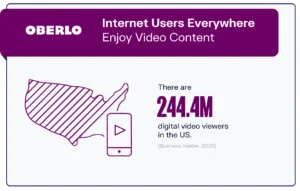
V – Video Marketing
Video marketing, particularly short-form video, is widely popular. The power of visual storytelling is apparent in the vast consumption of video online. Short clips tend to garner more attention, but UGC, virtual events, informative video and collaborations are all trends that are popular in 2023. Video is an indispensable addition to any modern corporate reputation management plan.
W – Website Optimization
Once you’ve captured your target’s attention, where do you think they will go for more information? Your website, of course! That’s why it’s best to optimize your website with user-friendly design, fast loading times and mobile responsiveness. A strong SEO strategy wouldn’t hurt either, as long as we’re adding website optimization to the corporate reputation management to-do list.
X – eXperiential Marketing

The bar for brands is incredibly high, and customers are looking for businesses to meet or exceed these expectations. One way to do that is to create an experiential marketing program as part of your corporate reputation management plan. These are immersive and memorable brand experiences that connect customers to the brand in an interactive way. It could be a pop-up store, a concert, special shopping opportunity, art installation, live streaming or in-person event.
Y – Yielding Feedback
With so many ways to connect, there will no doubt be feedback on the brand’s products, services, customer service, brand image and more. It’s important to seek out feedback and incorporate necessary changes throughout your corporate reputation management campaign. Strategies such as active listening and online brand monitoring can yield important feedback and insights. This is also true when it comes to crisis communication strategies, as customers will likely flock online to provide feedback on major issues.
Z – Zeal and Passion
In everything you do for corporate reputation management, be it for your brand directly or through your agency, the audience should feel a genuine enthusiasm for the company and its mission. This type of authentic passion can inspire and engage stakeholders, employees and customers alike.
PR from A to Z
By following these ABCs of PR, you can enhance your organization’s visibility, credibility and make an impact with your target audience in a crowded media landscape. From audience analysis all the way through zeal and passion, these corporate reputation management tactics will help your company find and connect with your target audience, stakeholders and employees. Even when crisis communication strategies are in play, following this letter-by-letter framework will help your business navigate the ins and outs of PR. Remember that PR is an ongoing process that requires dedication, strategic thinking and adaptability, so if you already have a corporate reputation management plan in place, you made need to revisit and update it as time passes.
Beyond Fifteen can help your brand implement a winning corporate reputation management plan that incorporates these valuable tactics. Connect with us to learn more!





